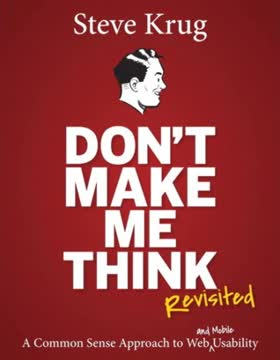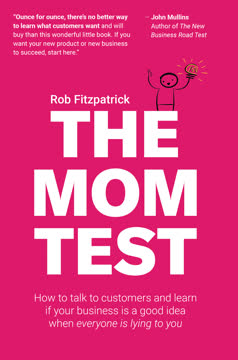Key Takeaways
1. Psychological bottlenecks shape digital meme success
"Digital innovations must survive the psychological bottlenecks of attention, perception, memory, disposition, motivation, and social-influence if they are to proliferate."
Bottlenecks and memetic fitness. The success of digital innovations, or "memes," depends on their ability to navigate through a series of psychological bottlenecks. These bottlenecks act as filters, determining which memes thrive and which fade away. The concept of "memetic fitness" emerges as a parallel to genetic fitness in biology, where the most adaptable memes survive and spread.
Key psychological bottlenecks:
- Attention
- Perception
- Memory
- Disposition
- Motivation
- Social influence
Understanding and aligning with these bottlenecks is crucial for meme creators and digital innovators. By designing memes that effectively pass through these psychological filters, creators can increase the likelihood of their innovations gaining traction and spreading throughout the digital ecosystem.
2. Attention is the first crucial bottleneck for digital memes
"Your meme will fail if the light from it only reaches our peripheral vision, where we can neither read nor see color."
Foveal acuity and task orientation. The first major hurdle for any digital meme is capturing and maintaining user attention. This process is heavily influenced by two factors: foveal acuity and task orientation. Foveal acuity refers to the small area of sharp vision in the center of our visual field, while task orientation describes whether a user is actively seeking information or passively browsing.
Key attention considerations:
- Design for foveal vision (central, focused attention)
- Align with user goals and task orientation
- Minimize distractions and competing stimuli
- Leverage motion and color to attract attention (cautiously)
To survive the attention bottleneck, memes must be designed to quickly capture foveal vision and align with the user's current task orientation. This might involve strategic placement of key information, use of contrast and motion, and tailoring content to match user intent.
3. Perception and memory form critical bottlenecks for meme survival
"Before we read the textual labels on graphic elements, we precognitively examine their form (Gestalt) and nearby elements to guess their function, so as to expend the least attentional effort to reach our goals."
Gestalt principles and memory encoding. Once a meme captures attention, it must be quickly and accurately perceived and remembered. Gestalt principles of visual perception play a crucial role in how users interpret and understand digital elements. Additionally, the process of encoding information into memory, particularly working memory and long-term memory, determines whether a meme will be retained and recalled later.
Key perception and memory strategies:
- Apply Gestalt principles (proximity, similarity, continuity, closure, figure/ground)
- Design for both working memory and long-term memory
- Use elaborative encoding techniques to enhance memorability
- Create distinctive and meaningful associations
Effective memes leverage these principles to create intuitive, memorable experiences. By aligning with natural perceptual tendencies and facilitating efficient memory encoding, memes increase their chances of surviving these critical bottlenecks.
4. User dispositions and motivations act as powerful meme filters
"There exists no ad, no feature, and no game that will uniformly appeal to us all. Our personalities influence whether we resonate or are repelled by your meme."
Personality traits and needs hierarchy. Individual differences in personality, developmental stage, and current needs significantly influence meme receptivity. The Big Five personality traits (openness, conscientiousness, extraversion, agreeableness, and neuroticism) and Maslow's hierarchy of needs provide frameworks for understanding these dispositions.
Key disposition and motivation factors:
- Big Five personality traits
- Developmental stages (e.g., Erikson's psychosocial stages)
- Maslow's hierarchy of needs
- Current goals and motivations
Successful memes are tailored to resonate with specific personality types, developmental stages, and motivational states. This might involve creating multiple versions of a meme to appeal to different audience segments or focusing on universal needs and motivations that transcend individual differences.
5. Social influence and receptivity determine meme propagation
"Both recommending memes and warning others against them raises our social capital."
Social proof and influence dynamics. The spread of memes is heavily influenced by social factors, including social proof, influencer dynamics, and the concept of social capital. Users are more likely to adopt and share memes that have been endorsed by trusted peers or that align with their social identity.
Key social influence factors:
- Social proof (e.g., likes, shares, reviews)
- Influencer endorsements
- Group polarization and echo chambers
- Social capital and reputation management
Effective memes leverage these social dynamics by encouraging sharing, facilitating social proof, and aligning with users' desired social identities. However, it's crucial to navigate the potential pitfalls of group polarization and echo chambers, which can limit a meme's reach to diverse audiences.
6. Effective meme design aligns with human psychology
"When your meme is taking advantage of the Gestalt perceptual principles, we grasp its function without thinking."
Cognitive ease and user experience. Successful memes are designed to minimize cognitive load and maximize ease of use. This involves aligning with natural cognitive processes, leveraging existing mental models, and creating intuitive user experiences.
Key design principles:
- Minimize cognitive load
- Leverage existing mental models and schemas
- Create clear affordances and signifiers
- Provide consistent and predictable interactions
By designing memes that feel natural and effortless to use, creators can increase adoption rates and user satisfaction. This might involve extensive user testing, iterative design processes, and a deep understanding of human cognitive tendencies.
7. Network dynamics govern the spread of digital memes
"Emerging studies suggest that the receptiveness of the many is more important than the connectedness of a few in triggering a viral spread."
Network structure and viral potential. The spread of memes through social networks is influenced by complex network dynamics. Factors such as network density, the presence of influencers, and the concept of "weak ties" all play roles in determining how far and how quickly a meme can spread.
Key network concepts:
- Network density and structure
- Influencers and hubs
- Weak ties and bridge nodes
- Viral thresholds and tipping points
Understanding these network dynamics can help meme creators optimize their distribution strategies. This might involve targeting specific network segments, leveraging bridge nodes to reach diverse communities, or focusing on creating highly shareable content that can easily spread through weak ties.
Last updated:
FAQ
1. What is Bottlenecks: Aligning UX Design with User Psychology by David C. Evans about?
- Core focus: The book explores how digital innovations must align with human psychological bottlenecks—attention, perception, memory, disposition, motivation, and social influence—to succeed and spread.
- Memetic survival: Drawing on the concept of memes as cultural replicators, Evans argues that only those digital ideas that fit human psychology will thrive.
- Broad application: The book covers a wide range of digital media, including apps, social media, games, and infotainment, integrating insights from multiple branches of psychology.
- Practical case studies: Real-world examples illustrate how aligning design with user psychology benefits both users and businesses.
2. Why should I read Bottlenecks by David C. Evans as a UX designer or digital innovator?
- Deep user psychology: The book provides actionable insights into how psychological bottlenecks affect user experience, helping you design more effective products.
- Avoid common pitfalls: Many digital products fail due to misalignment with human nature; Evans offers strategies to avoid these mistakes.
- Business impact: Aligning design with psychology can increase engagement, retention, and monetization, as shown in case studies like Facebook and Allrecipes.com.
- Theory meets practice: The book bridges foundational psychological theory with practical advice, making it valuable for designers, marketers, and entrepreneurs.
3. What are the key psychological bottlenecks discussed in Bottlenecks by David C. Evans?
- Attention and perception: Users have limited attentional capacity and perceptual constraints, such as foveal acuity and Gestalt principles, affecting how they notice and process content.
- Memory and disposition: Working and long-term memory limitations require designs that aid encoding and retrieval, while disposition matching involves aligning content with users’ personality traits and life stages.
- Motivation and social influence: Motivation is shaped by reward schedules and approach-avoidance mindsets, while social influence determines how memes spread through recommendations and social capital.
4. How does Bottlenecks by David C. Evans explain the role of attention in UX design?
- Foveal acuity: Users can only see clearly in a small area of their vision, so key content must be placed where it will be noticed.
- Task orientation: Users switch between goal-directed (task-positive) and exploratory (task-negative) modes, requiring adaptable UX strategies.
- Attentional focus and habituation: Overuse of attention-grabbing elements leads to habituation, reducing their effectiveness and increasing cognitive load.
- Signal detection theory: Users actively filter information, deciding what is signal versus noise, which impacts ad and notification effectiveness.
5. What does Bottlenecks by David C. Evans say about perception and Gestalt principles in UX design?
- Precognitive interpretation: Users interpret visual elements using Gestalt principles like proximity, similarity, and connectedness before reading labels.
- Design alignment: Proper use of these principles helps users understand function effortlessly, reducing errors and cognitive load.
- Depth and motion cues: Simulating depth and motion with graphic cues can enhance engagement without expensive hardware.
- Consequences of violations: Ignoring Gestalt principles can lead to misinterpretation or overlooked features.
6. How does Bottlenecks by David C. Evans describe working and long-term memory as bottlenecks in digital media?
- Working memory limits: Users can only hold a small amount of information briefly, making it crucial to minimize memory load in UX.
- Decay and displacement: Information in working memory decays quickly or is displaced by new input, especially during multitasking.
- Long-term memory encoding: Durable memories require elaborative encoding and retrieval cues; repeated exposure without reinforcement leads to extinction.
- Business implications: Continuous new content is needed to sustain engagement, as nostalgia alone has limited long-term impact.
7. What is psychographic segmentation and how does Bottlenecks by David C. Evans recommend using it in UX design?
- Maslow’s hierarchy foundation: Psychographic segmentation often reveals user needs that mirror Maslow’s hierarchy, helping tailor features to motivations.
- Data-driven approach: Conduct surveys and analyses to identify user groups with similar needs and product “hooks.”
- Precise disposition matching: Aligning features with psychographic profiles increases relevance and reduces user annoyance.
- Practical advice: Hire market research analysts to uncover and act on these insights for better product-market fit.
8. How does Bottlenecks by David C. Evans explain the impact of personality traits and developmental stages on user engagement?
- Big Five traits: Users’ engagement is influenced by personality traits like discipline, abstractness, neuroticism, cooperation, and extraversion.
- Developmental stages: Users’ existential questions and motivations change with age, affecting what content resonates.
- Personalization strategies: Collect personality data through surveys or behavioral modeling to tailor messaging and features.
- Enhanced engagement: Matching content to personality and life stage increases motivation and user satisfaction.
9. What are “schedules of reinforcement” and how do they affect user engagement according to Bottlenecks by David C. Evans?
- Variable-interval schedule: Rewards given after unpredictable time intervals encourage frequent checking and FOMO (fear of missing out).
- Variable-ratio schedule: Rewards after an unpredictable number of actions increase stickiness and resistance to extinction.
- Business impact: These schedules drive up visits and clicks, dramatically increasing ad inventory and revenue.
- Examples: Social media feeds and casual games use these schedules to maximize user engagement.
10. How does Bottlenecks by David C. Evans describe the role of “fun” and secondary reinforcers in digital product success?
- Fun as survival factor: Fun is crucial for digital memes that sit atop Maslow’s hierarchy, determining which thrive.
- Taxonomy of fun: The book identifies over fourteen forms of fun, such as beauty, competition, creation, and discovery, to inspire engagement strategies.
- Secondary reinforcers: Simple graphical rewards (e.g., badges, likes) act as symbolic motivators linked to primary needs.
- Low-cost motivation: These reinforcers increase user behaviors at minimal cost to developers.
11. What is the “approach-avoidance” conflict in conversion flows, as explained in Bottlenecks by David C. Evans?
- Approach mindset early: Users respond to benefits and value propositions when far from the goal (e.g., early in registration).
- Avoidance mindset near goal: As users near conversion (e.g., payment), they focus on risks and uncertainties, requiring reassurance.
- Omega strategy: Addressing avoidance concerns with messages like “This PC is compatible” can significantly boost conversions.
- Practical application: Tailor messaging to user mindset at each stage of the conversion flow for optimal results.
12. How does Bottlenecks by David C. Evans explain social capital and its role in meme recommendation and viral spread?
- Social capital motivation: Users recommend memes to gain social credibility and strengthen their identity.
- Net Promoter Score (NPS): NPS measures likelihood to recommend, dividing users into promoters, passives, and detractors.
- Behavior over intention: Actual recommendation behavior is more predictive than stated intent; companies should track real actions.
- Managing detractors: Responding constructively to negative feedback helps maintain reputation and viral potential.
Review Summary
Bottlenecks receives mostly positive reviews, with an average rating of 4.17 out of 5. Readers praise its insights on user experience, product design, and idea spreading. Many find it enjoyable, informative, and easy to read. The book's contemporary examples and detailed citations are appreciated. Some reviewers highlight its value for designers, product owners, and content creators. However, a few critics note that enthusiasm wanes in later chapters, and one reviewer suggests the book's main point could be summarized briefly. Overall, most readers recommend it for its practical advice and engaging content.
Similar Books










Download PDF
Download EPUB
.epub digital book format is ideal for reading ebooks on phones, tablets, and e-readers.




